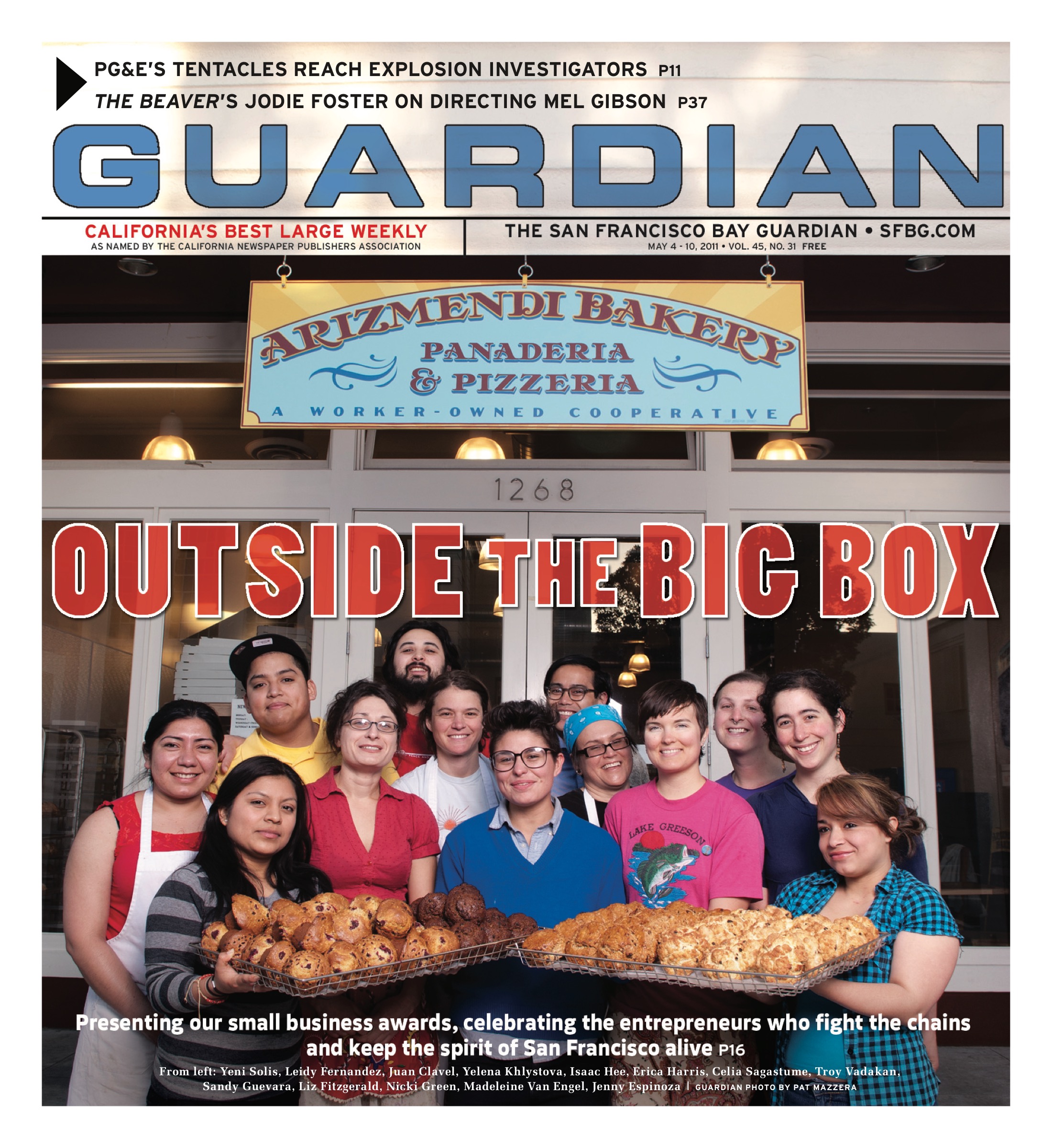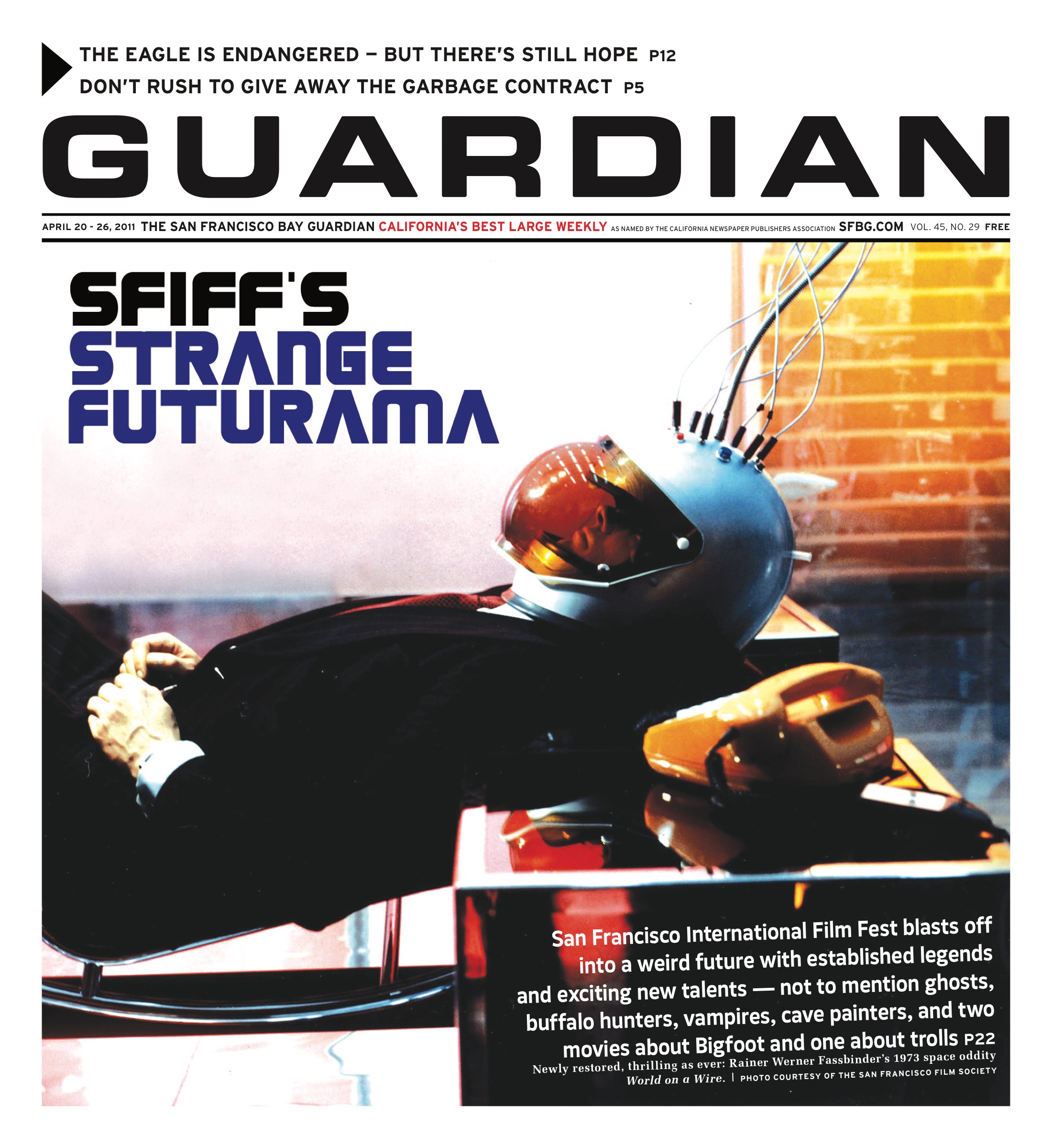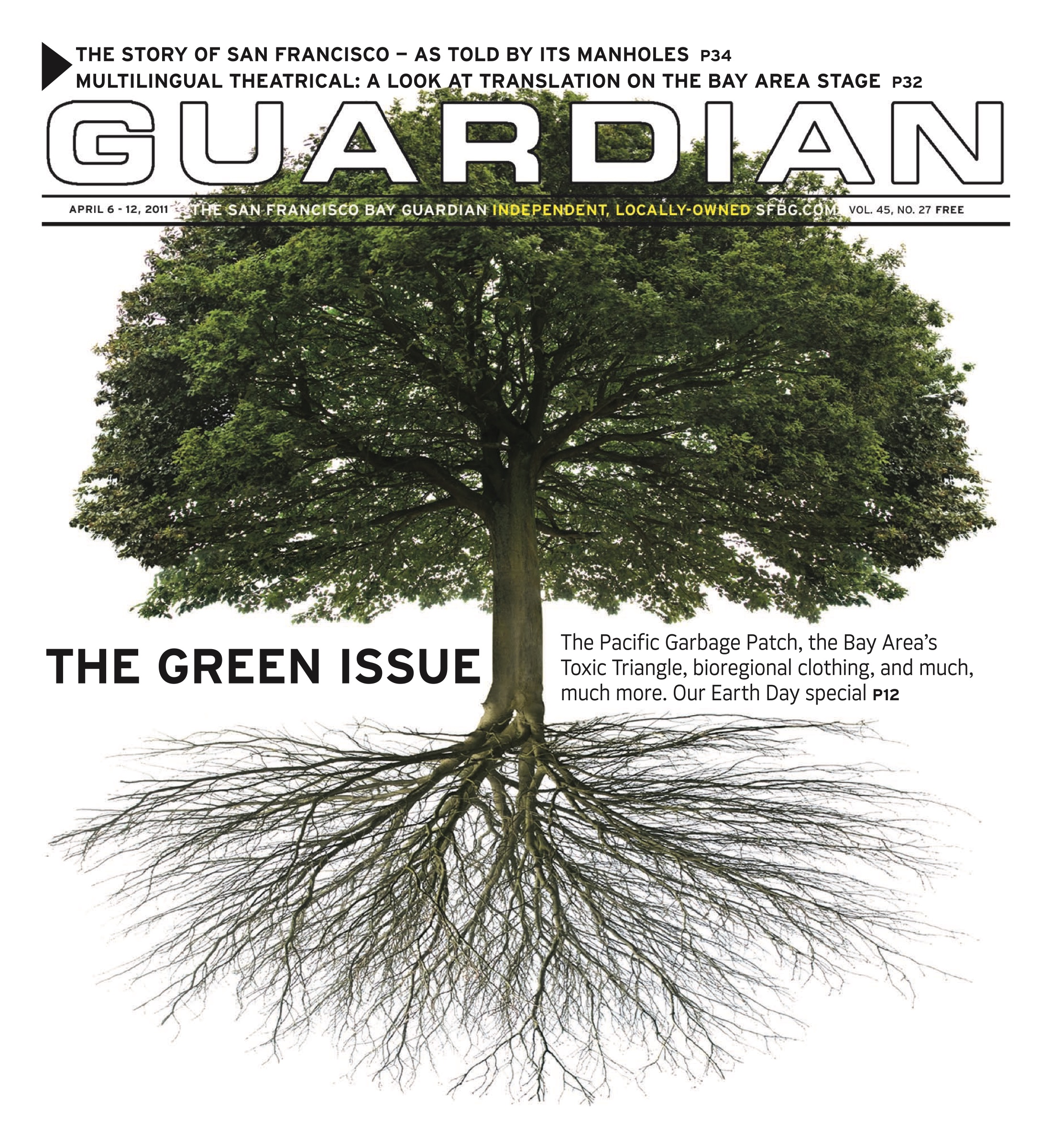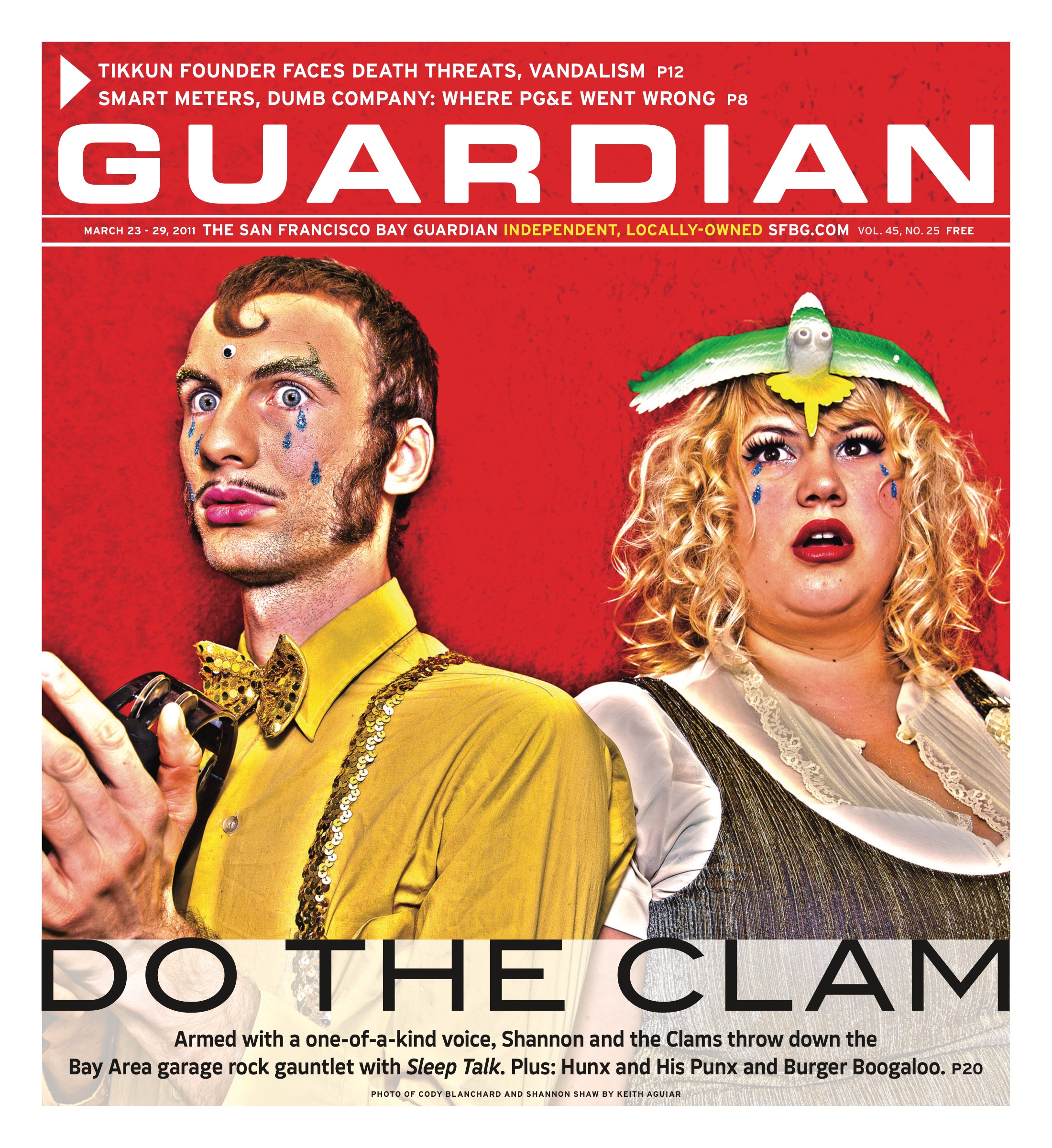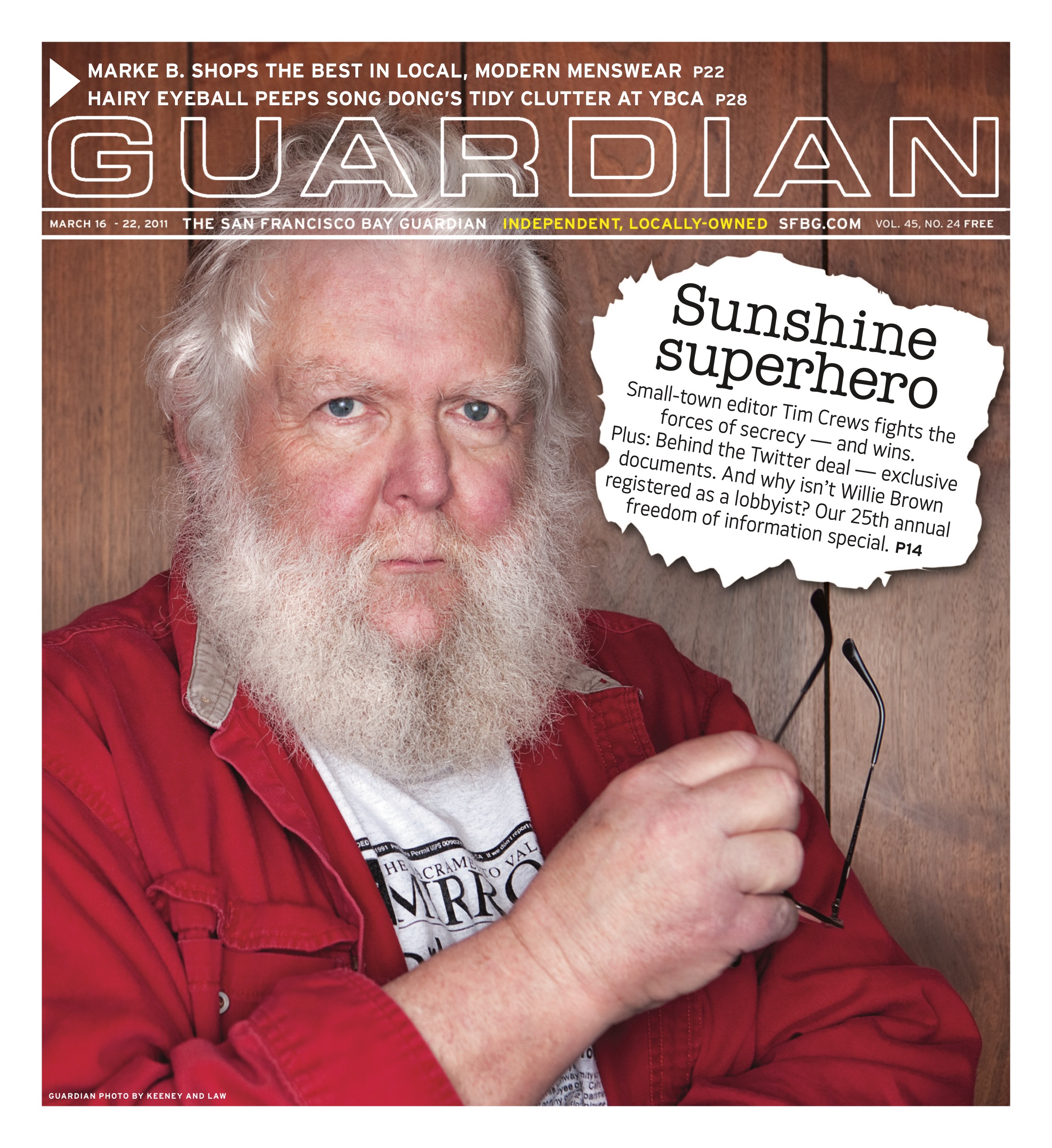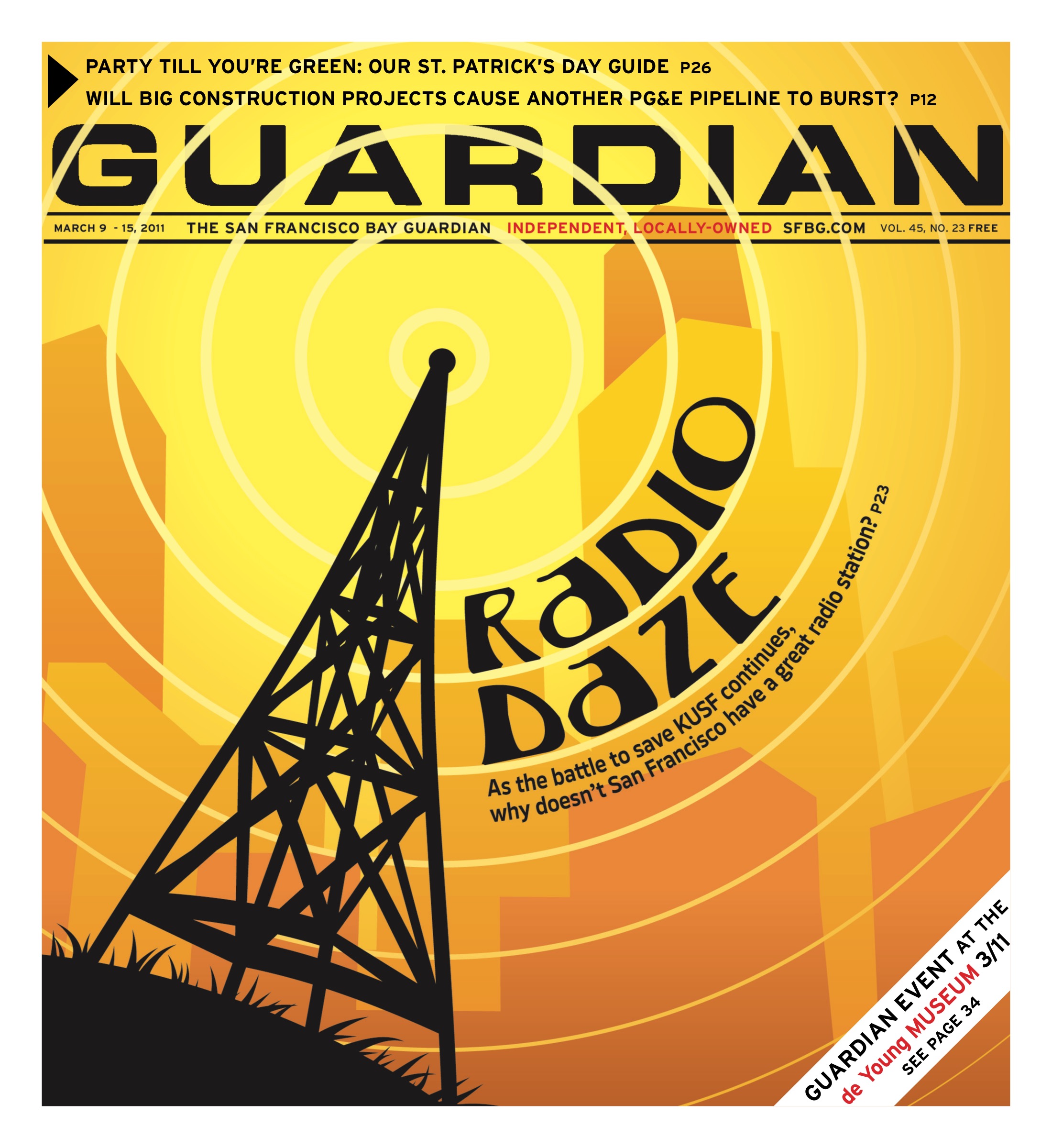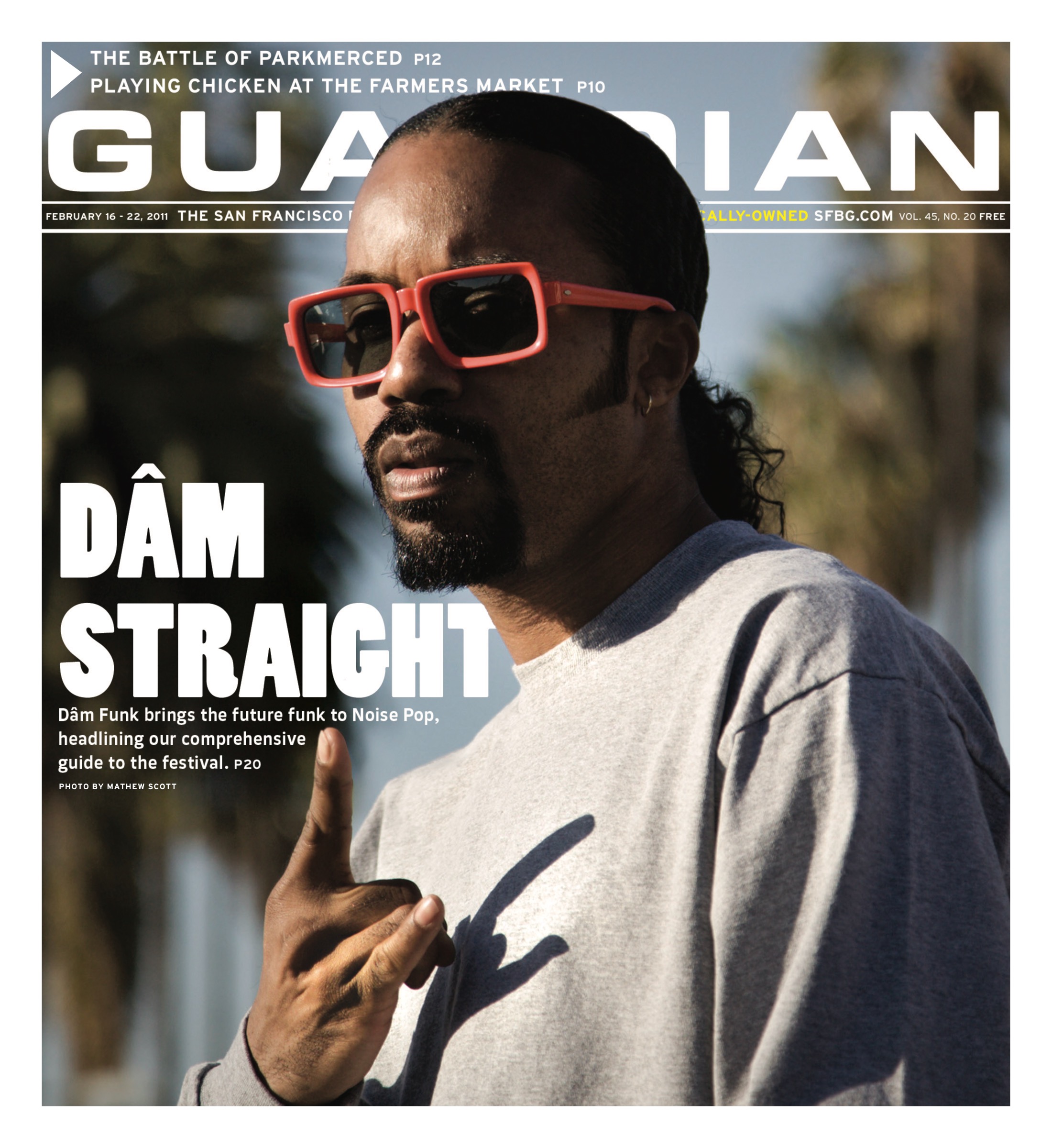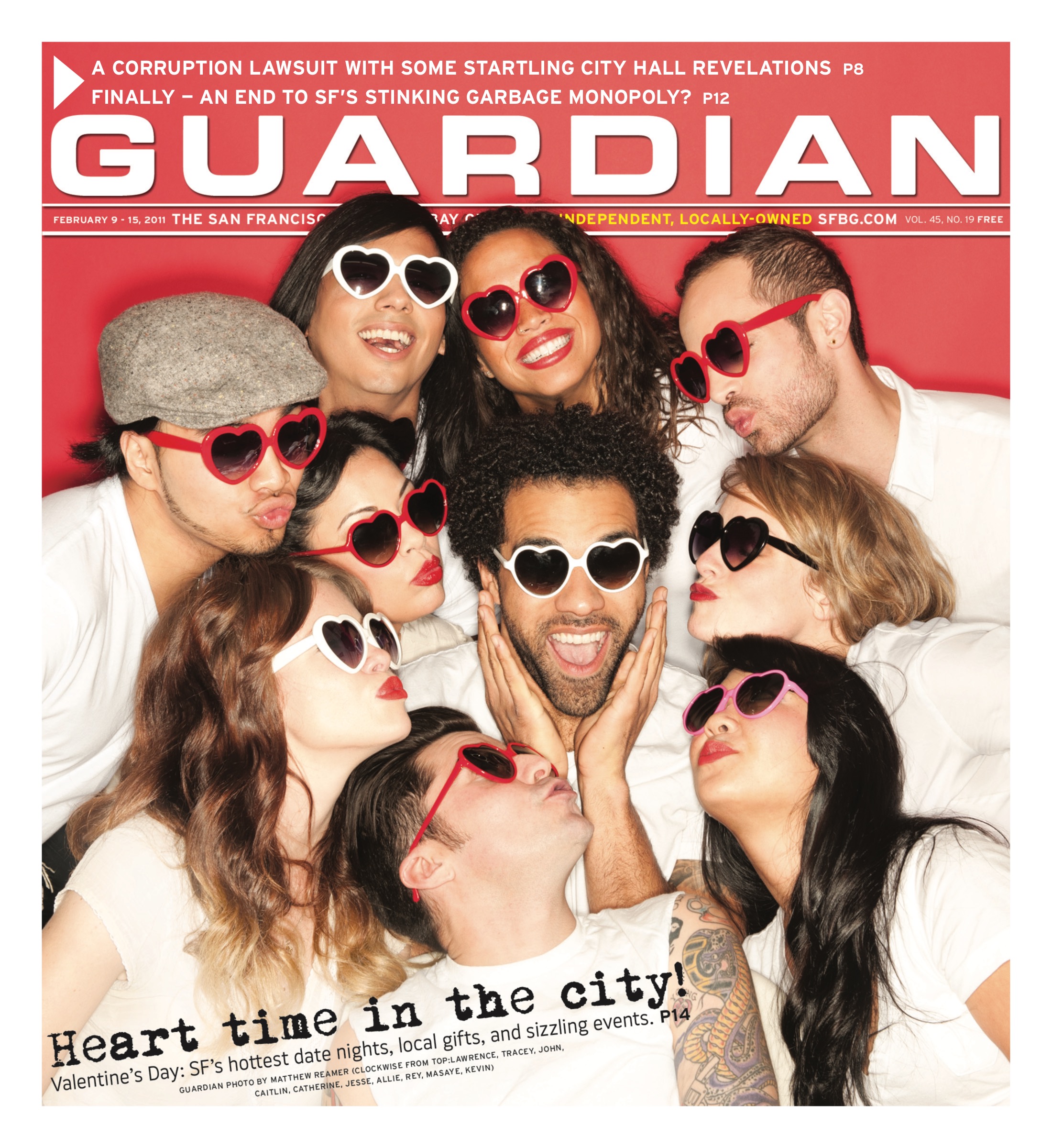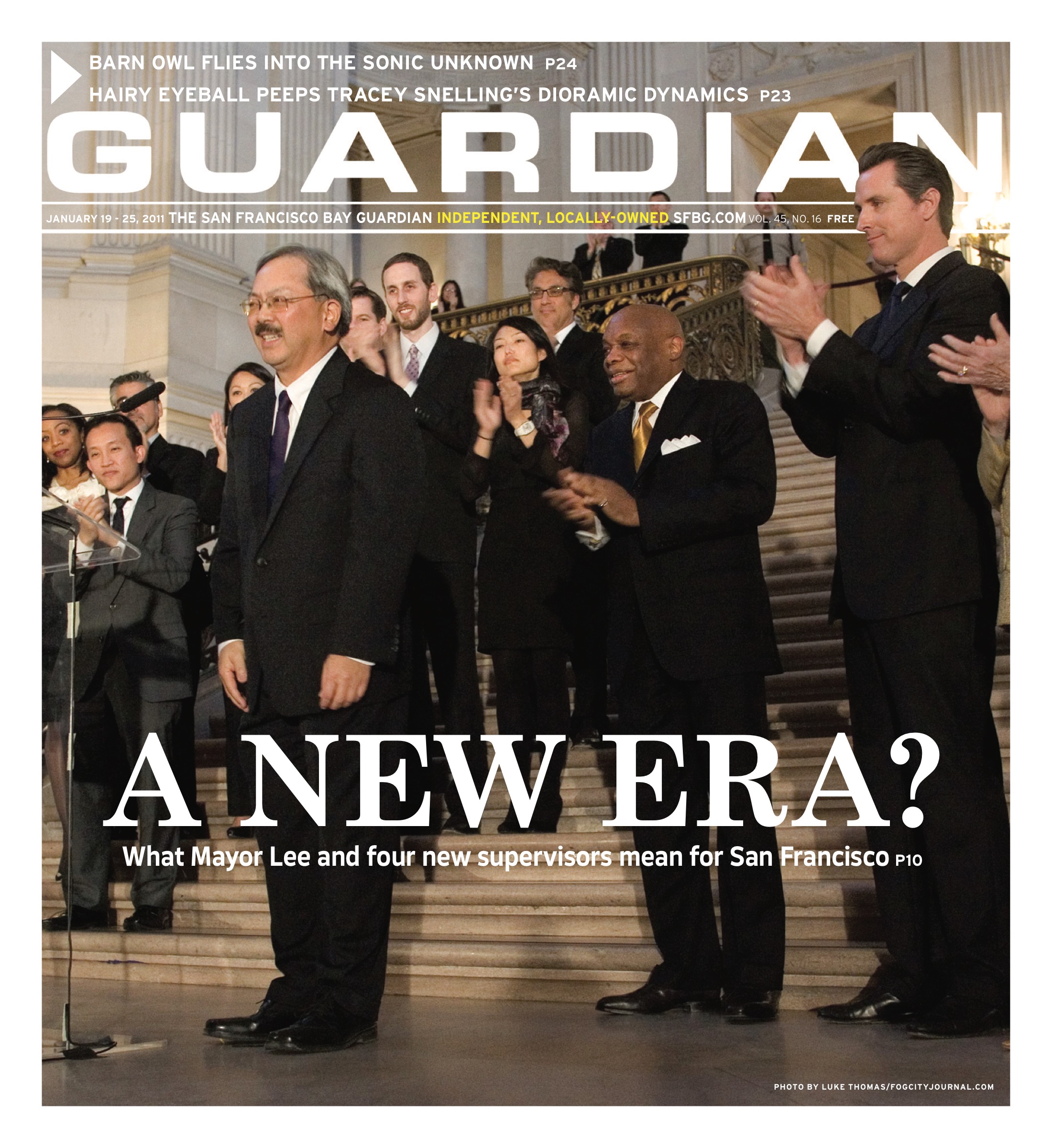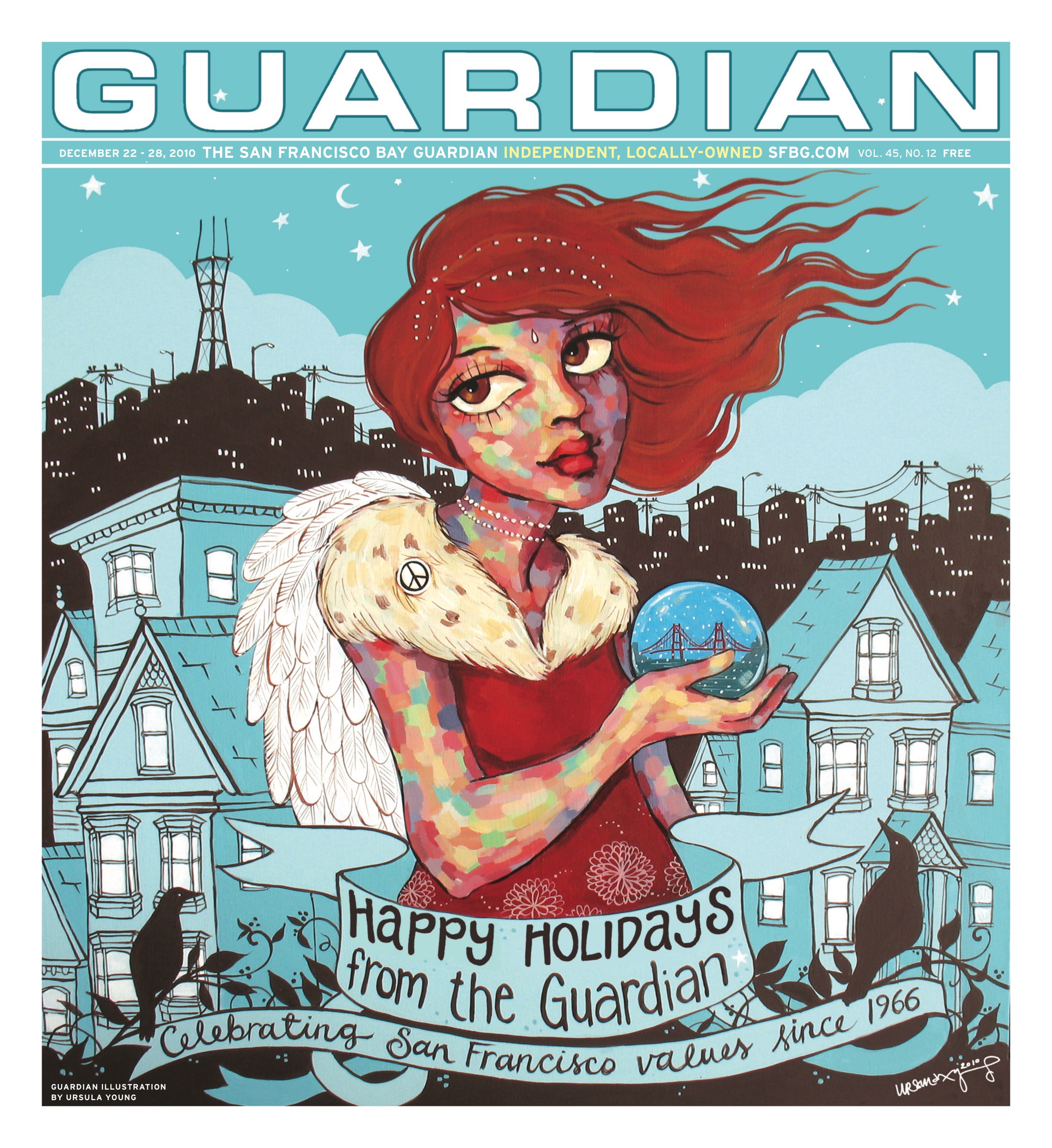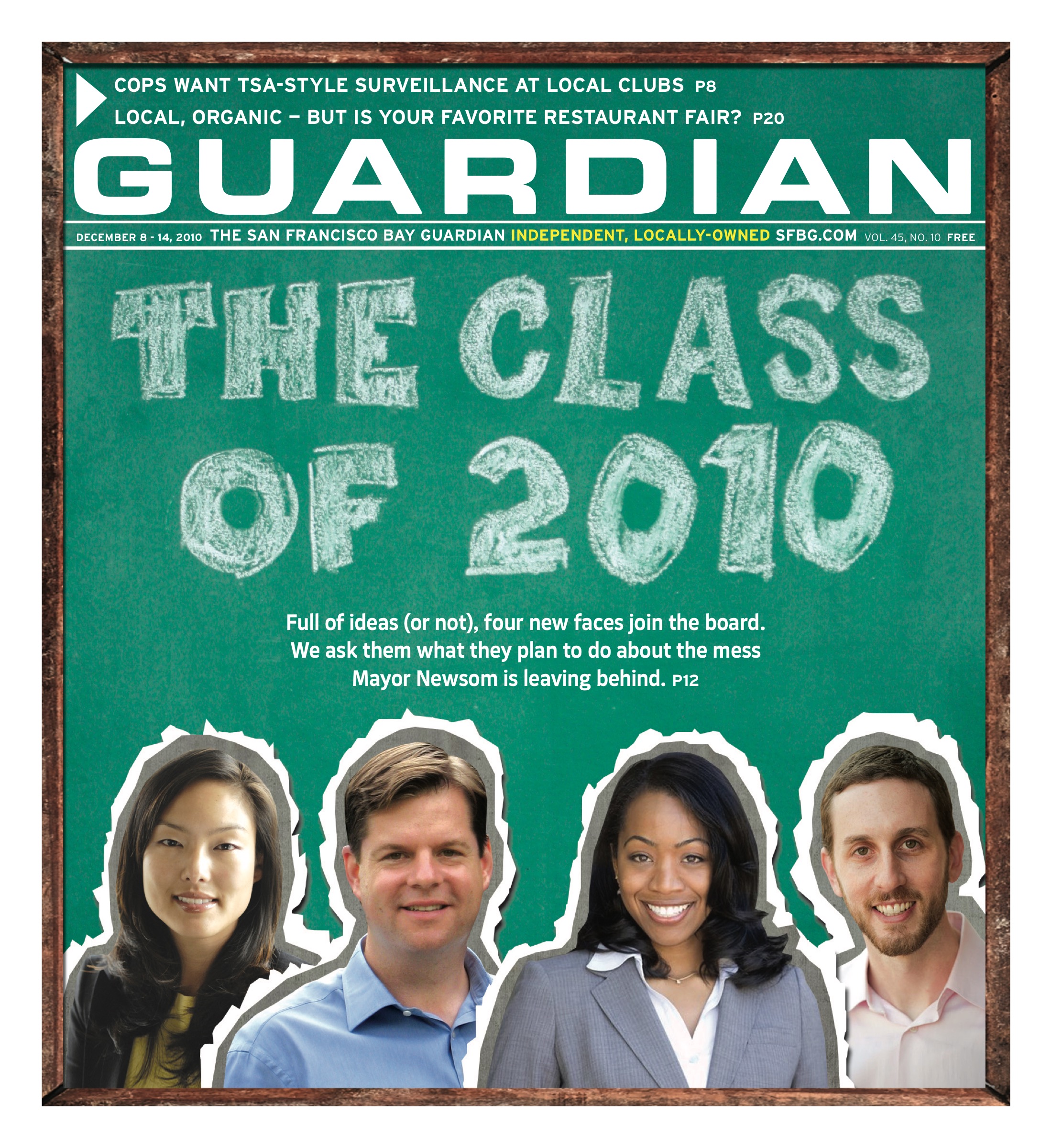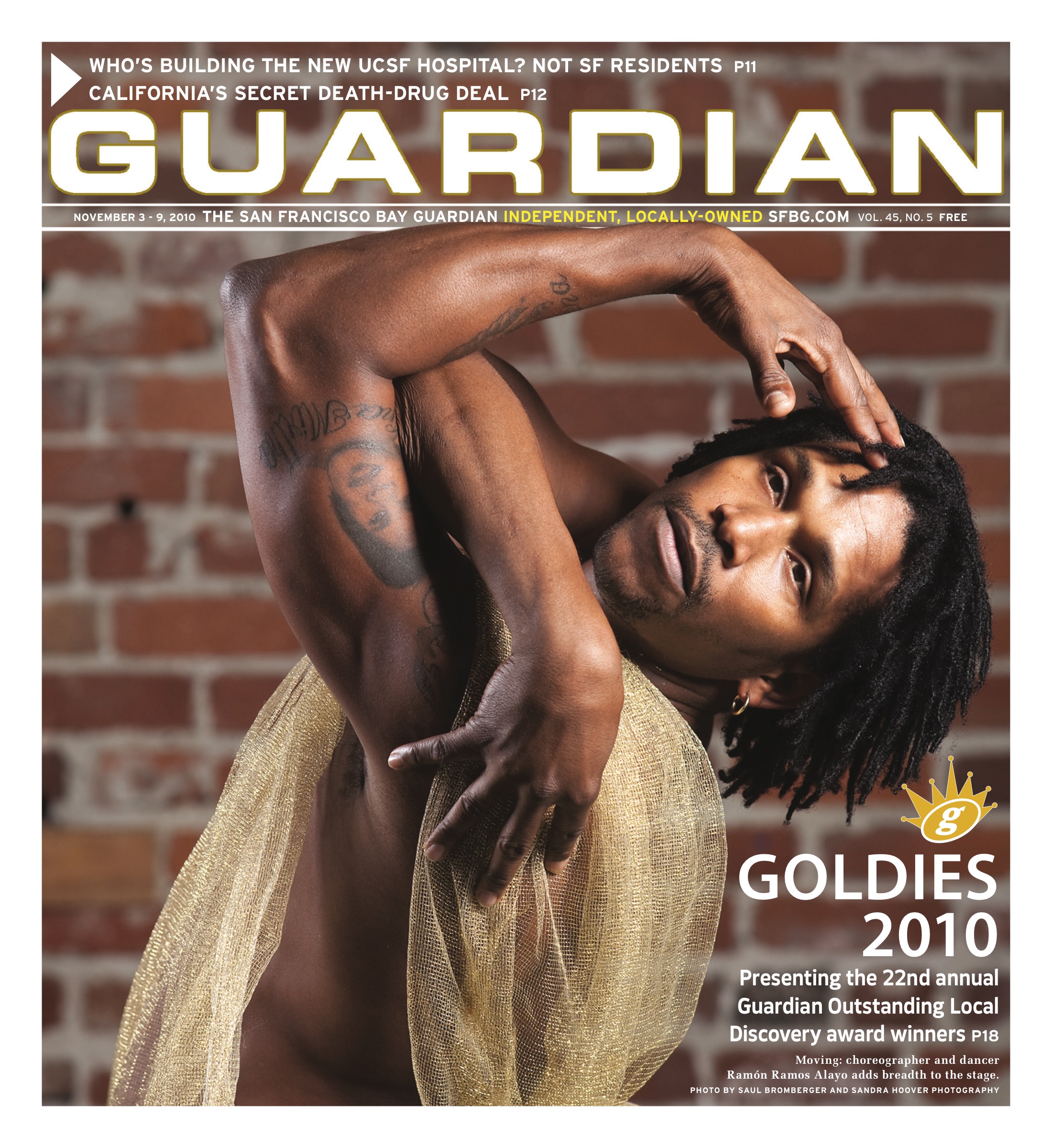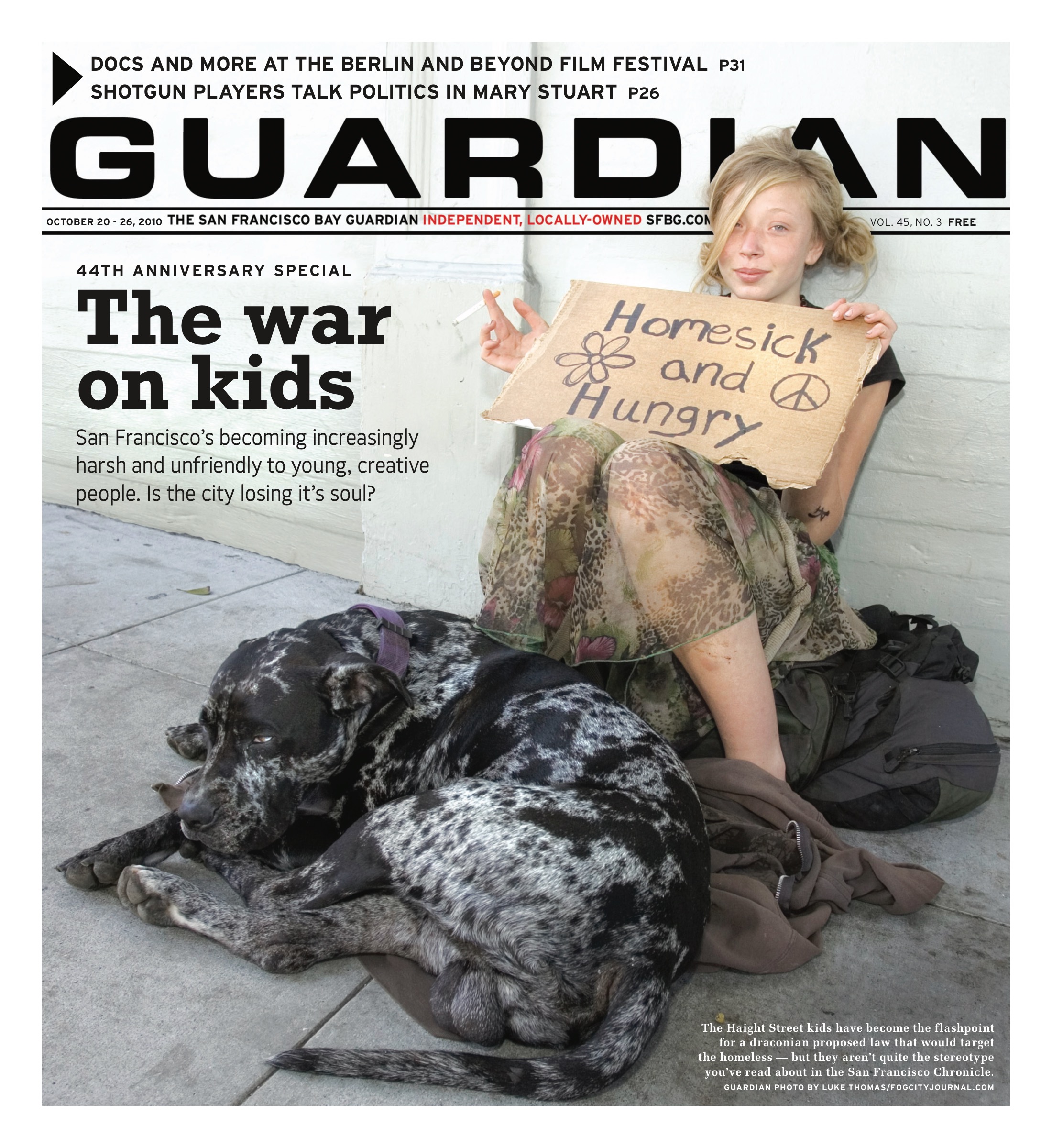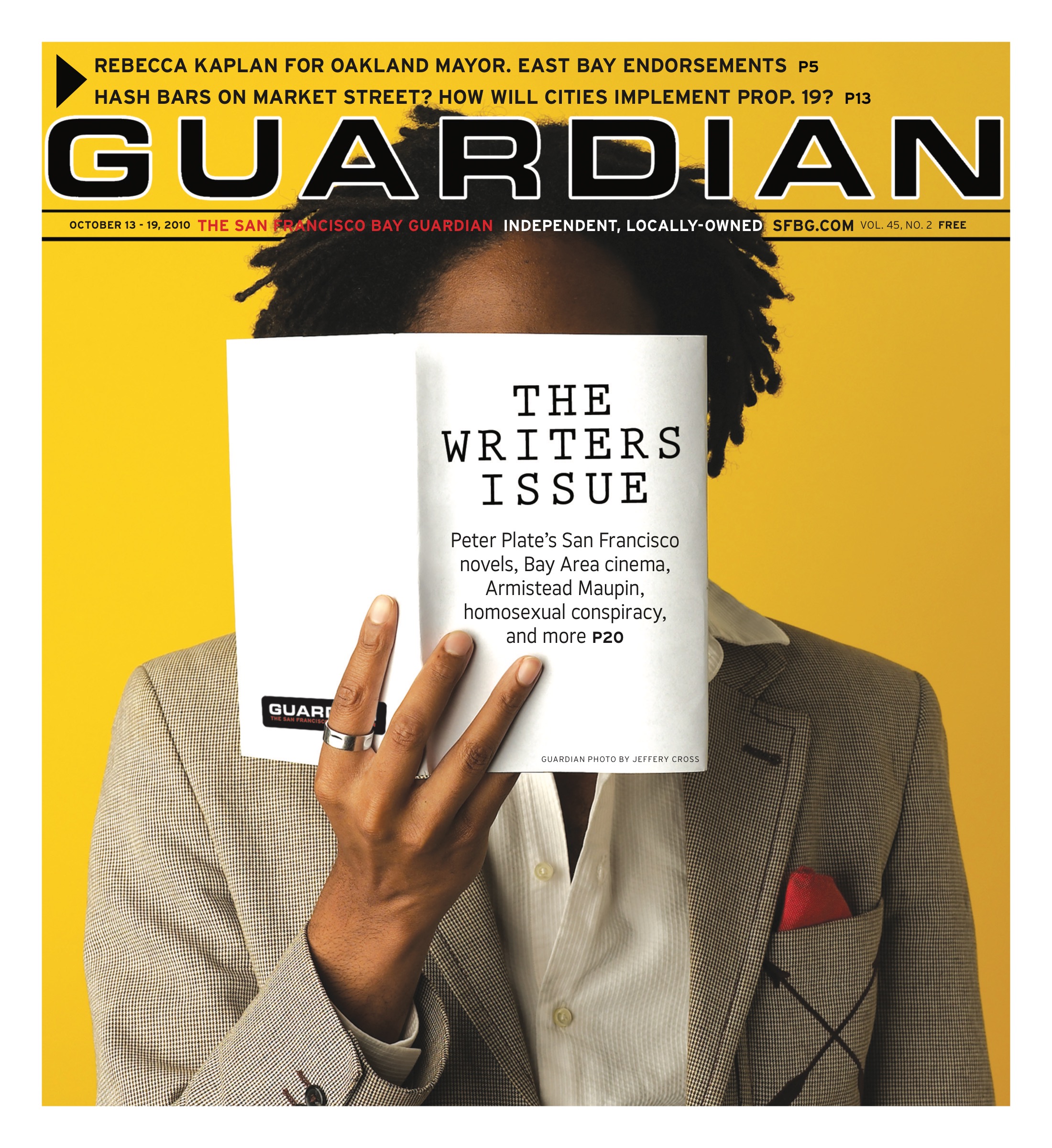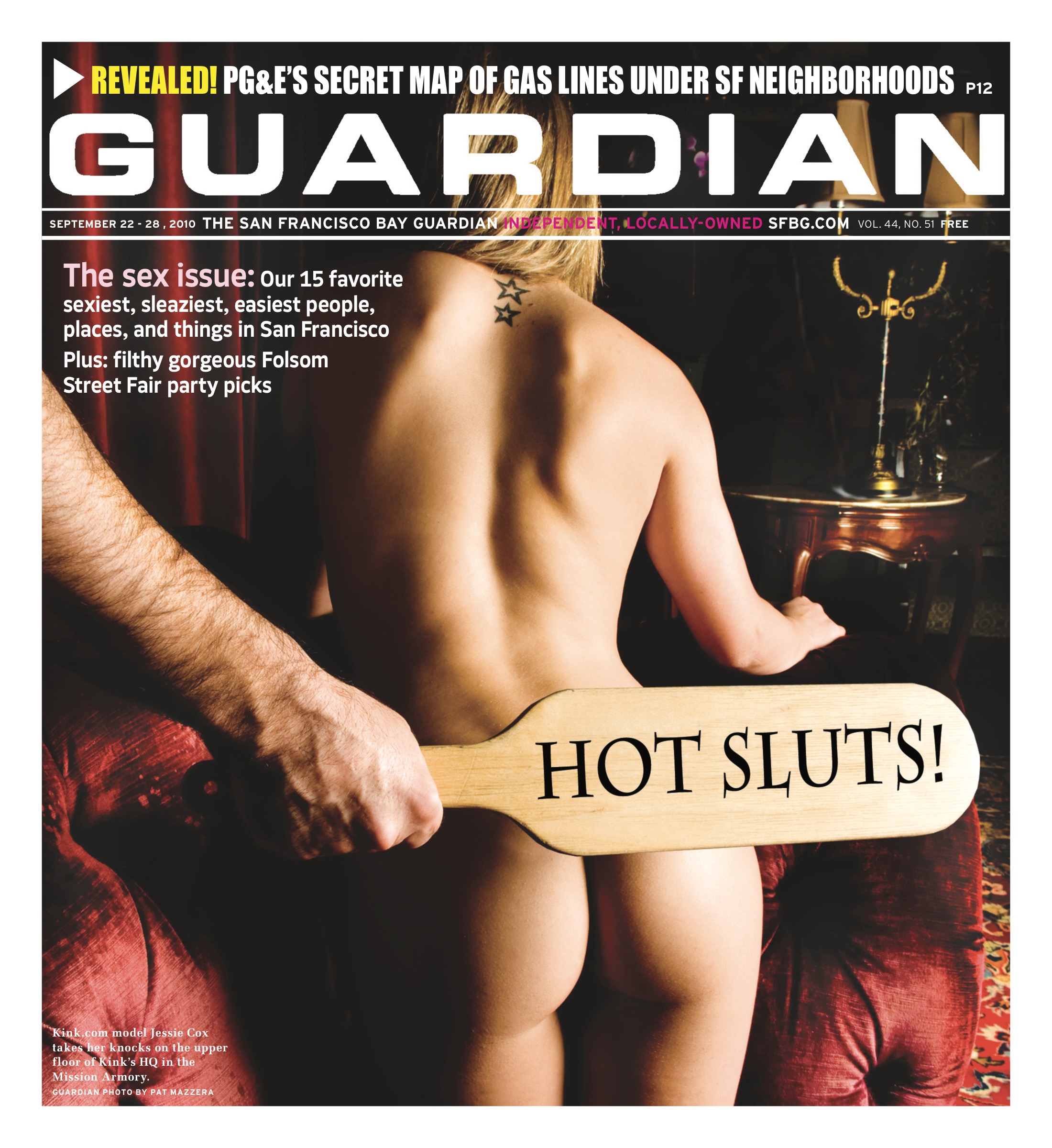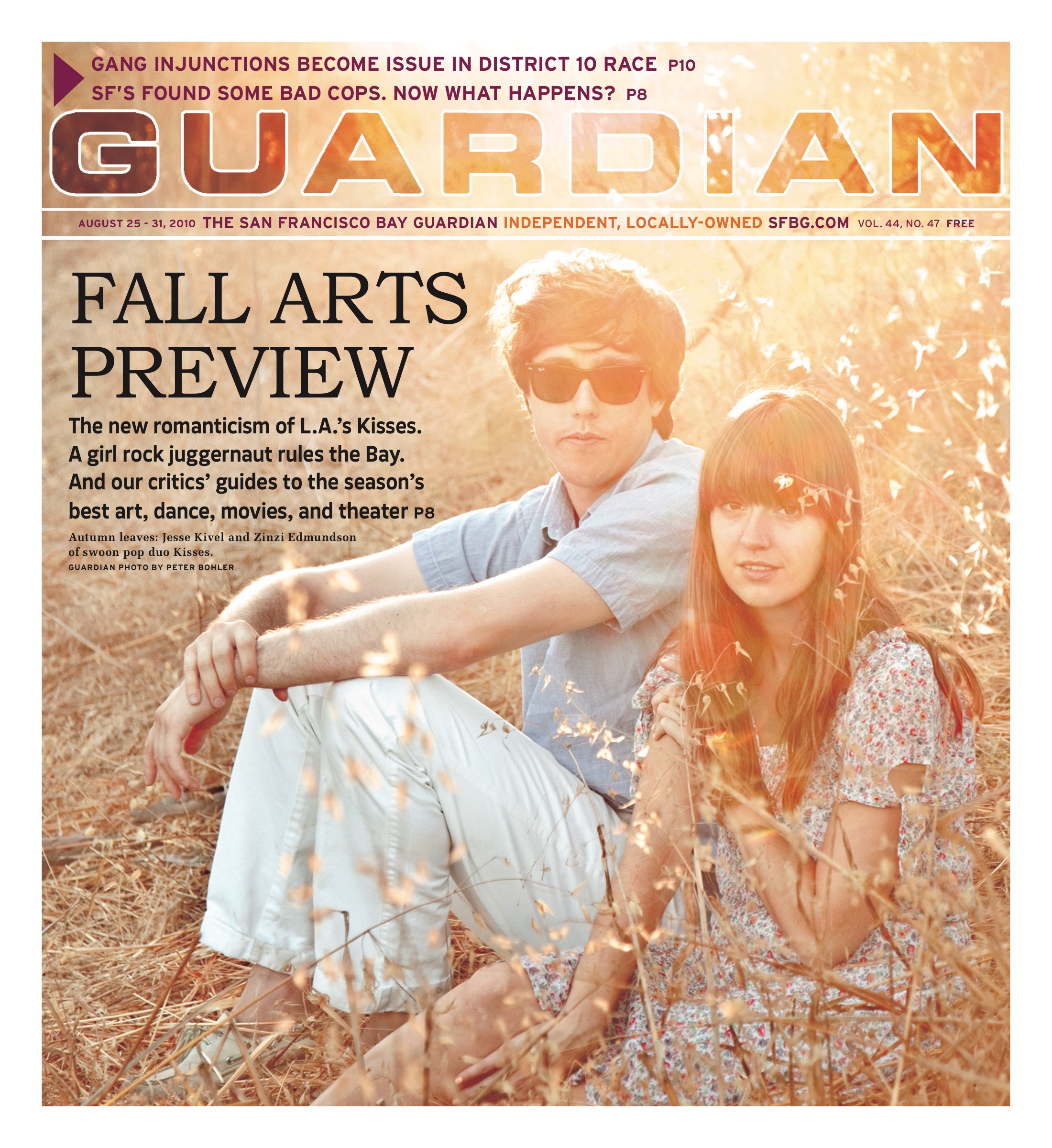arts@sfbg.com
DANCE In December 2009, as part of a double bill with Kara Davis, Kate Weare showed an excerpt of a work in progress in which Leslie Kraus rammed her head into Douglas Gillespie’s chest, knocking him flat on his back. It’s a moment one is unlikely to forget. Weare must have thought so as well, because she retained the passage in Bright Land, which received its San Francisco premiere at ODC Theater this past weekend.
The setting is a hootenanny with the Crooked Jades quintet — splendid, smart, solid musicians — providing both the inspiration and the live accompaniment to the dances. Many of the songs — they were listed in the program, with the lyrics available online — are dark and ambiguous in the way that folk material tells one story on the surface, but covers up more complex perspectives. I regretted that more of the texts could not be easily understood during the performance.
Bright opens with the musicians strolling in and Lisa Berman’s steely version of “Moonshine” — a song about incest, rape, prison, and death. Not exactly happy-time music, but it pays tribute to those stark parts of life we don’t like to think about. Reflecting that double vision, the choreography starts with the dancers walking in, the men (Gillespie and Adrian Clark) from one side, the women (Kraus and Marlena Penney Oden) from the other. Crossing paths, they stop in their tracks and the party is on.
From the beginning, these dancers are as weary of as they are attracted to each other. Traditions are acknowledged, with the men swinging the women and the women circling the men — there are even shades of square dancing. But encounters are rough, short-lived, and pulling-at-the-seams. They are angular, dense, and then, for no apparent reason, the tumultuous actions stop, as if a film has been cut. Yet there are moments of joy and tenderness: a cheek receives a caress, skin-to-skin contact is fully relished.
In addition to the ever-surprising full-body language, Weare uses a rich mix of gestures: ramrod straight arms, chopping hands, sly smiles. Throughout the work, the women seem to have particular powers. At one point they head straight for each other and plant a kiss on each other’s lips. While clearly a sexual act, it looks even more like an acknowledgment that the two are on the same page. For “Old Man Below,” they sit like crones in wide squats, never taking their eyes off of the male duet. Skipping in an exuberant sisterhood, they swing the men’s shirts around their heads. Often they seem flirtatious, flipping their skirts and fanning themselves.
But Bright is no political tract. These dancers tangle, dive, and pull each other into duets, trios, and quartets, not so much in romantic or oppositional relationships, but as part of defining themselves and each other. In a slow dance section — with the lights discreetly lowered — the two couples seemed glued to each other, but without the expected erotic heat. In “Uncle Rabbit,” watched over by his colleagues, Gillespie’s questioning solo sent him into a tortuous back bend, echoed by the observers. Later he launched himself headfirst between the supine Kraus’ legs with no reaction from her. Penney Oden, however, stripped off her dress.
A long, sculpturally intricate duet in which the dancers flowed like cream over each other took excellent advantage of Kraus’ petite but fierce persona and Gillespie’s tall but lanky frame.
What fascinated throughout, besides the precise use of an intricate language, was the sense of these people simultaneously being pulled every which way. Weare doesn’t present this issue in terms of resolvable conflicts but as an existential state of being. These men and women live off ambiguity, contradictory impulses, and instability. They are going full-speed, except when everything stops. Yet they are also vibrantly and sensuously alive, every pore of their skin open to the next sensation, and knowing they can be kicked out of the game anytime. Rarely does putting up a mirror to our frantic, multitasking, and always-on existence make for such satisfying and well-performed choreography.

